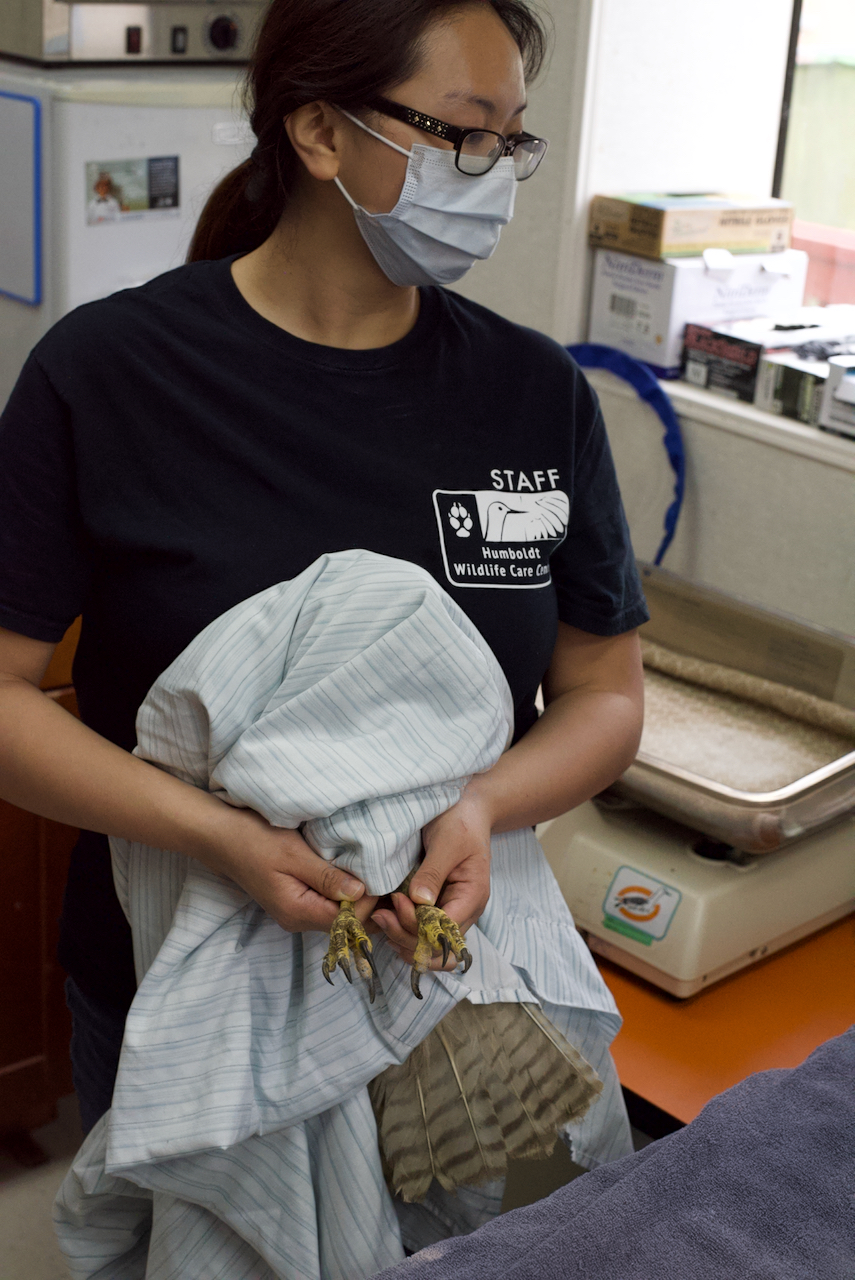
The Pandemic year is putting our facility at risk. As our human community grapples with the health and economic challenges of COVID19, donations have fallen sharply even as our admissions of wild animals in need is up nearly 20% over last year! WE NEED YOUR HELP BADLY!
2020 began in turmoil. First of all, as wildlife centered caregivers, the fires in Australia, with their incalculable toll on wild animals was difficult to watch without understanding that climate chaos threatened all that we hold closest to our hearts, all that gives life on our beautiful green Earth meaning.
Second of all, our fundraising in 2019 did not keep pace with our caseload, which had increased over 2018 by nearly 15%! We finished the year, down $8000 from our usual yearly amount, and short of our actual needs.
And then, in February, it became apparent that the novel coronavirus, COVID 19, was going to impact our daily lives here in Humboldt County.
In early March we put our volunteer and intern programs on haitus, reducing clinic staffing to the few members of our paid part-time crew, and myself, the director. We hoped, naively, that a few weeks would see us return to our usual Spring and Summer.
Needless to say, its been anything but usual.
Our caseload is heavier than any year in HWCC history. We wondered how the pandemic would impact our work, speculating that people might not be out and about as much and therefore finding fewer orphaned or injured wild animals. But such is not the case at all. As I write this, just past noon on July 28, we’ve admitted 940 patients this year so far, about 170 more patients than last year to this date. 170 is the number of patients we typically admit in our busiest months, June and July – so this year it’s like we got an extra June thrown in with our regular June.
This year we are treating well over a dozen orphaned seabirds, mostly Common Murres and Rhinoceros Auklets, over a dozen Black-tailed Deer fawns, we’ve cared for and released two dozen orphaned Mallard ducklings and nearly a dozen Canada Goslings – many House Finches, White crowned Sparrows, Violet Green Swallows, – we’ve provided care and housing to more baby Robins this year than the last 8 years combined! With our masks on and hearts engaged we’ve helped nearly 30 homeowners and renters peacefully resolve a wildlife conflict, keeping wild families together.
Our staff is well-trained, dedicated, and willing to make sacrifices. The long hours are part of the job, as are the joys and the heartbreaks. But this pandemic year is asking more than we are able to give. We can summon the energy to rise to the occasion, to meet the challenge of our tasks, but we can’t print our own money. When the electric bill (thankfully shut-offs are postponed during the pandemic) and the water bill come due, no amount of staff member sacrifice will be accepted as currency. We need money.
I don’t particularly like discussing the details. But they go like this. Every year we set a goal for our fundraising. Every year we fall short. In 2011, when I came to HWCC, we had an annual budget of about $50,000 a year, one paid staff member and almost no patient housing, no pools for seabirds, no aviaries for raptors or ravens, no place for raccoons or opossums, no waterfowl aviary for ducks and geese.
Since 2015, we’ve raised about $110,000 each year, with which we developed our facility as best as we can within our space and financial limits, and added part-time staff to our crew. Our caseload has risen from 900 animals per year in 2010 to last year’s high of 1332 wild animals in need. We’ve added important services which reduce the number of injured and orphaned wild neighbors, such as advocating for policies that protect the Wild, and most critically, our humane solutions program which peacefully resolves human/wild conflicts keeping wild families together – this helps stop illegal trapping of wild mothers, like Raccoons, and stops their babies from becoming orphans.
Now here we are, the end of July, and we are more than $22,000 behind our most recent years. This is serious. We cannot sustain such a deficit for long.
Every day when people bring us injured wild animals they’ve found, they often say, “Oh my god, we’re so glad you’re here, we didn’t know what to do.” When this pandemic started, and businesses were first being closed, and medical supplies became hard to get, I voiced to close friends my private fear that the turmoil caused by the novel coronavirus could swamp our small wildlife hospital and few would even mourn our passing in the greater losses all around us.
But we are still here, and we have a hundered patients currently in our care, and probably another five hundred coming before this year is over. We cannot disappear! I promise that I and the rest of HWCC/bax staff and interns (we brought a few back in June) will be here – caring for our patients as best we can. Quality care though, depends on people who are able to help us out with the things that we can only get with money. Please donate! Please dont let the only wildlife hospital serving Humboldt, Trinity, Del Norte and Mendocino counties be another casualty of COVID19.
Thank you!



